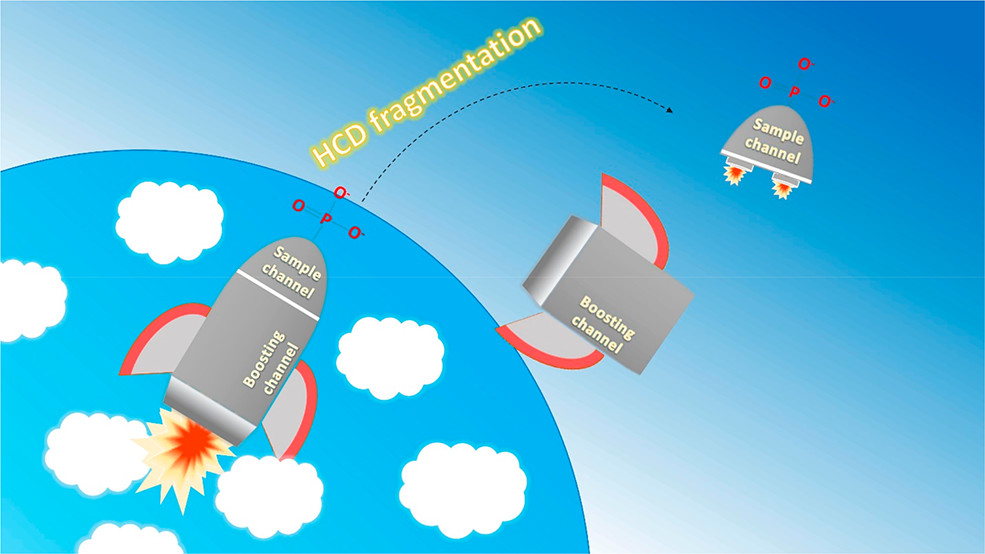Phosphorylation is a key process in the regulation of protein activity  and has long been appreciated as an essential mechanism for the control of cellular function - tells a protein where to go, what to bind to and even when to die. However, the challenge of studying phosphorylation and other post-translational modifications with traditional proteomic methods arise from small spectrometric signals that are hard to detect with conventional tandem mass spectrometry (MS/MS), and even more difficult when there is little material to analyze.
and has long been appreciated as an essential mechanism for the control of cellular function - tells a protein where to go, what to bind to and even when to die. However, the challenge of studying phosphorylation and other post-translational modifications with traditional proteomic methods arise from small spectrometric signals that are hard to detect with conventional tandem mass spectrometry (MS/MS), and even more difficult when there is little material to analyze.
In their most recent article published in the Journal of Analytical Chemistry, CPTAC investigators and colleagues from the Pacific Northwest National Laboratory, Harvard Medical School and University of Florida proposed a way to amplify MS/MS signals from small peptides by adding a boosting sample. This TMT labeled boosting sample combined with the study sample increases the total signal above the MS/MS detection threshold, prompting the ionization of the entire sample, and subsequently allowing data analysis. It is this novel step that has garnished this group a spot on the journal cover! This method termed the ‘Boosting to Amplify Signal with Isobaric Labeling’ (BASIL) strategy, tricks the instrument to initiate the reading of smaller peptides and not getting lost in the dark matter of proteomics.
To verify the application of the BASIL method, the group examined human pancreatic islet cells from eight non-diabetic cadaver donors and treated them with interferon-γ and interleukin-1β to induce changes in protein phosphorylation that resembled type-1 diabetic inflammation. Working with these cells is particularly difficult because only a small number of cells can be provided for analysis and they usually have a much lower amount of phosphorylated proteins. Using BASIL, the group was able to discover over 20,000 phosphorylation sites from these cells, up from the 8,500 obtained by using the SILAC-based workflow, while using half the amount of protein. Yet another victory for BASIL analysis!
The possibilities that this technique affords the post-translational proteomic community is vast in increasing sensitivity to study proteins that were previously too small in amount to see, and we are pleased to have our CPTAC investigators at the forefront of this exciting application. Click on the link to find out more.

